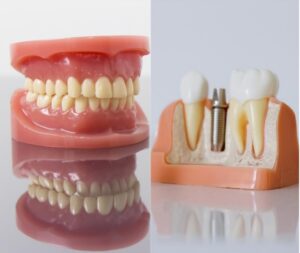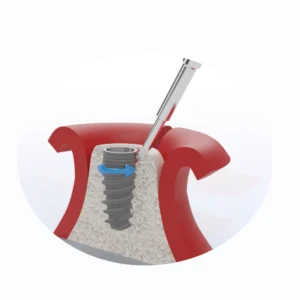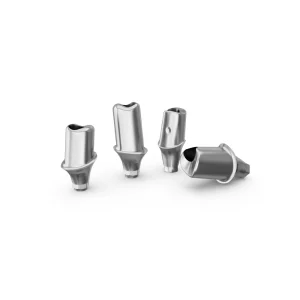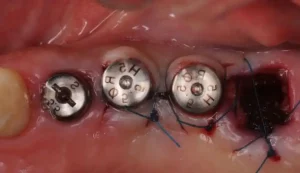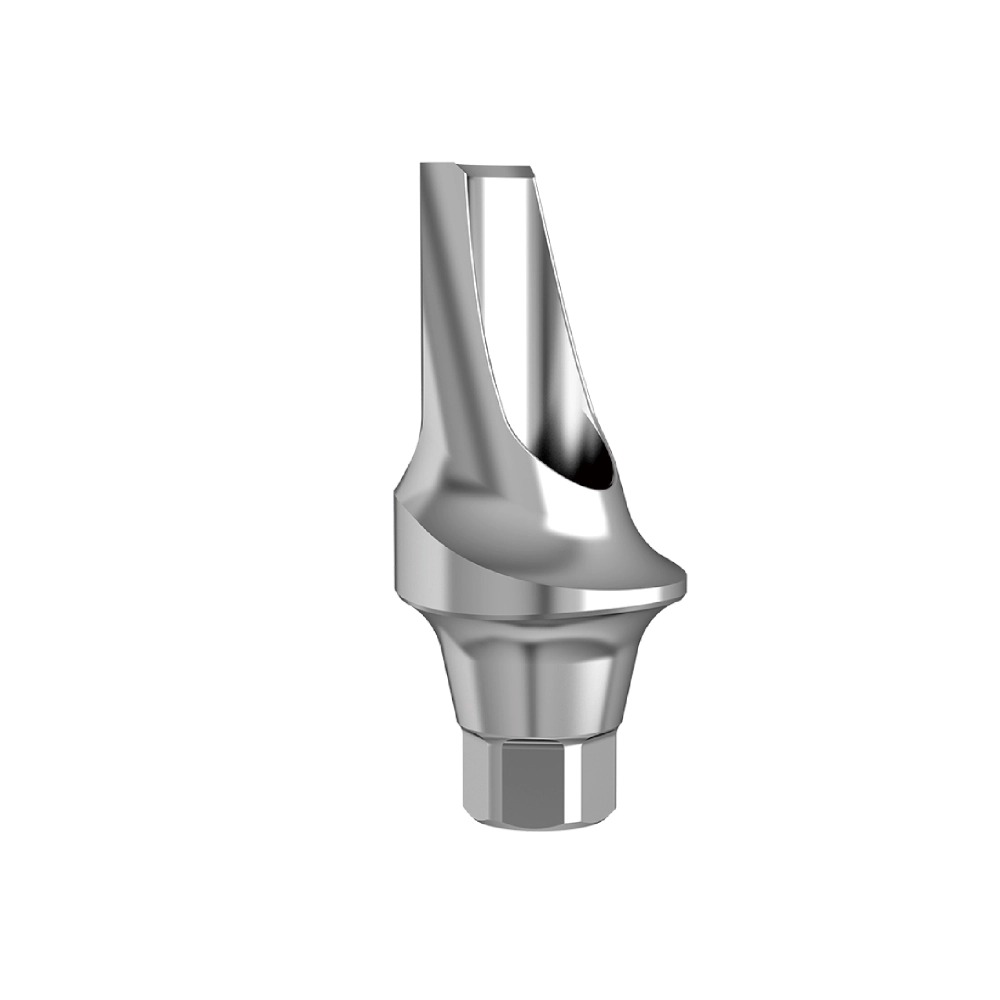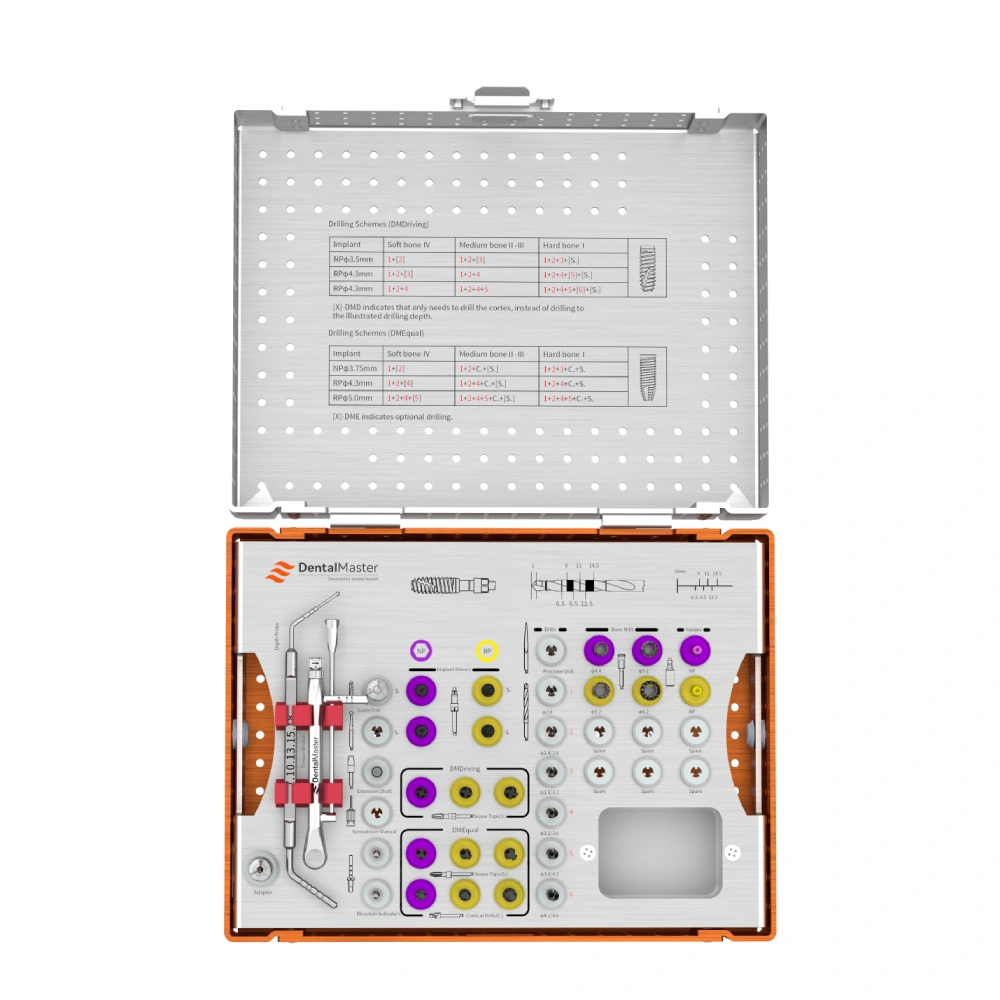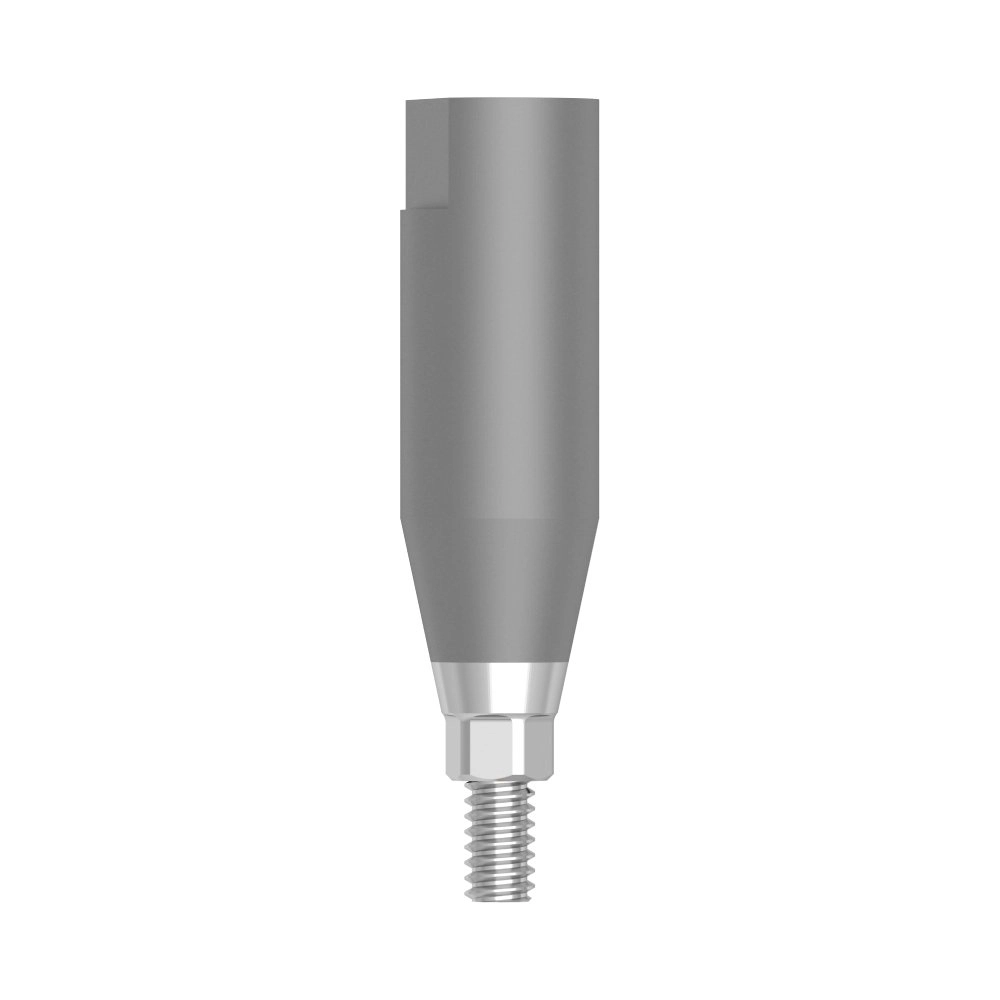
Among the many solutions available for replacing missing teeth, dental implants have emerged as the gold standard for maintaining long-term oral health and restoring normal oral function. However, not all implants are the same—choosing between titanium and ceramic (zirconia) dental implants is a critical decision for both patients and dental professionals.
Each of these implant materials offers its own unique advantages, as well as potential limitations. Their performance may vary based on factors such as biocompatibility, aesthetics, material strength, and long-term durability. In the sections that follow, we will provide a comprehensive and in-depth comparison of titanium and ceramic implants, examining their respective pros and cons to help you choose the most suitable option for your personal needs or modern dental practice.
Two types of dental implant material
In the field of dental implant restoration, titanium and ceramic (zirconia) implants are two widely used and highly regarded materials, each exhibiting notable differences across several key performance metrics.
Titanium implants are well-known for their excellent biocompatibility, allowing for strong osseointegration with the surrounding bone tissue. This provides a reliable foundation for long-term implant stability. Additionally, titanium’s high strength and toughness make it well-suited to withstand significant chewing forces, making it ideal for various complex oral biomechanical conditions.
On the other hand, ceramic (zirconia) implants are celebrated for their outstanding aesthetic properties. Their tooth-like color closely resembles natural teeth, making them an attractive choice for patients seeking highly aesthetic restorations. Zirconia also demonstrates excellent bio-inertness, which may reduce the risk of metal allergies. However, in terms of strength and fracture resistance, ceramic implants are generally inferior to titanium. Therefore, for patients with strong bite forces or more complex oral conditions, the suitability of ceramic implants should be carefully evaluated.
What Are Titanium Dental Implants?
Titanium alloy dental implants have been clinically applied since the 1960s. Over decades of practice and advancement, dental professionals have accumulated a substantial body of data supporting the feasibility and effectiveness of titanium in implant procedures. Today, the vast majority of dental implant research and development is centered around titanium implant systems.
A titanium dental implant typically consists of three main components:
- A metal screw that is surgically embedded into the jawbone,
- A metal abutment that connects the implant to the prosthetic crown, and
- A ceramic crown that is placed on top of the abutment to restore the tooth’s appearance and function.
Once implanted, the titanium screw undergoes a process called osseointegration, in which it forms a strong and stable bond with the surrounding bone tissue. This unique physiological process provides a solid and long-lasting foundation for the dental implant.
Advantages of Titanium Dental Implants
As previously mentioned, titanium dental implants have been in clinical use for over 65 years, resulting in a vast amount of data and clinical experience in the field of implant dentistry. This long history has earned titanium implants a high level of trust among both patients and dental professionals.
- Exceptional Durability
Titanium is an incredibly strong and resilient metal, capable of withstanding various external forces. As a result, implant fractures are extremely rare. With proper oral hygiene and regular dental maintenance, a titanium implant can last up to 25 years or more. - Taux de réussite élevé
Multiple authoritative studies have demonstrated that titanium implants have a success rate of up to 97% within the first 10 years after placement. This statistic reflects the reliability and long-term stability of titanium as an implant material. - Outstanding Biocompatibility
Titanium exhibits excellent biocompatibility with bone and gum tissue. It is highly resistant to corrosion and has low electrical conductivity, both of which reduce the risk of irritation or adverse reactions in surrounding tissues. - Cost-Effective Solution
From a financial perspective, titanium implants are generally about $300 less expensive than zirconia (ceramic) implants. This price advantage makes titanium implants a more accessible and budget-friendly option for many patients.
Disadvantages of Titanium Dental Implants
- Risk of Metal Allergy
Although rare, some patients may experience an allergic or hypersensitive reaction to titanium. Research shows that only about 0.6% of patients exhibit sensitivity to titanium. However, if such a reaction occurs, it may lead to discomfort, inflammation, or even implant failure. - Limites esthétiques
In patients with thin gum tissue or gum recession, the darker metallic color of the titanium implant may become visible through the gums, potentially affecting the overall aesthetics of the restoration. - Potential Issues with Two-Piece Design
Titanium implants are typically designed as two separate components—the titanium screw and the abutment. While this modular approach allows for greater flexibility, it can also create small gaps where moisture and bacteria may accumulate, increasing the risk of infection. - Less Natural Appearance
Although implants en titane are engineered to resemble natural teeth, they may still fall short of the visual harmony achieved with ceramic implants. Zirconia implants offer superior translucency and tooth-like coloration, resulting in a more natural-looking restoration.
What Are Zirconia Dental Implants?
Zirconia, a crystal form of the transition metal zirconium, is widely recognized for its tooth-like color and aesthetic appeal. Despite being derived from metal, zirconia’s unique chemical and physical properties allow it to be classified as a non-metallic material. Through specialized manufacturing processes, zirconium is converted into zirconia, giving it ceramic characteristics—hence the term “ceramic implants.”
In recent years, the rising concern among patients regarding the use of metal in oral implants has led to growing interest in metal-free alternatives, making zirconia implants an increasingly popular option. Today, ceramic dental implants are FDA-approved and have demonstrated clinical effectiveness. However, since zirconia implants have been introduced to the market more recently than titanium implants, long-term data on their durability is still relatively limited.
It is also worth noting that ceramic implants typically feature a one-piece design, unlike titanium implants, which are generally composed of a screw and an abutment.
Advantages of Ceramic (Zirconia) Dental Implants
- Outstanding Aesthetics
Zirconia implants are made from pure white materials, making them ideal for patients with thin gum tissue or gum recession, as there is no risk of dark metal showing through the gums. - When placed by experienced periodontists, zirconia implants are nearly indistinguishable from natural teeth, offering a highly realistic and visually pleasing restoration.
- Bonne biocompatibilité
Multiple studies have shown that zirconia implants provoke minimal inflammatory response and offer osseointegration outcomes comparable to titanium implants. This ensures a stable and reliable bond between the implant and the surrounding bone. - Oral Health Benefits
Compared to titanium, zirconia has a lower tendency to attract plaque and bacteria. Additionally, its one-piece design eliminates gaps between components—common in two-piece systems—thereby reducing the risk of bacterial buildup and promoting better long-term oral hygiene. - Low Allergenicity
Zirconia is a metal-free material, making it a safer option for patients with metal allergies or sensitivities. Even individuals with titanium allergies can confidently opt for zirconia implants without fear of adverse reactions.
Disadvantages of Ceramic (Zirconia) Dental Implants
- Higher Placement Difficulty
Due to its one-piece structure, zirconia implants require precise angulation during placement, which can be challenging for less experienced dentists. In contrast, titanium’s two-piece system allows for angulated placement and greater flexibility during surgery, improving the overall success rate. - Higher Cost
Zirconia implants generally come with higher manufacturing costs, which makes them more expensive than titanium implants. This increased cost may deter some patients who are budget-conscious. - Limited Availability
As a relatively new product in the U.S. market, zirconia implants are not yet widely offered by all dental clinics. This limits patients’ choices and may pose an inconvenience when seeking specialized treatment.
Comparison Table: Ceramic vs. Titanium Dental Implants
| Critères de comparaison | Implants en céramique (Zirconia) | Titanium Implants |
|---|---|---|
| Material Type | Ceramic (Zirconia) | Metal (Titanium) |
| Esthétique | Highly natural appearance, closely resembles real teeth; ideal for anterior restorations or patients with high esthetic demands | Good appearance, but metal may become visible, especially if gum recession occurs |
| Biocompatibilité | Excellent; low inflammation response and bone integration comparable to titanium | Also excellent; forms strong osseointegration with bone tissue |
| Strength & Durability | High strength, though small-diameter implants may be more prone to fracture | High strength and durability; low risk of fracture |
| Coût | Generally higher due to complex manufacturing and technology requirements | Relatively lower; widely available and cost-effective |
| Indications | Ideal for single-tooth restoration, patients seeking natural aesthetics, and those allergic to metals | Suitable for a wide range of restorations, including full-arch; ideal for cases needing strong support |
| Hypoallergenic | Yes; metal-free and safe for patients with metal allergies | Very rare cases of titanium allergy |
| Résistance à la corrosion | Excellent; resistant to oral environment | Also excellent; highly corrosion-resistant |
| Long-Term Data | Limited, due to relatively recent clinical use | Extensive, with over 50 years of successful clinical history |
| Surgical Complexity | Higher technical demand, especially with one-piece designs | Easier to place; two-piece design allows for greater flexibility |
| Market Availability | Relatively new; not available in all dental clinics | Widely available and commonly used worldwide |
Conclusion :
This table summarizes the key differences between ceramic and titanium dental implants. The final decision should be based on the patient’s specific needs, oral condition, aesthetic preference, potential allergies, and professional advice from the dental practitioner.
Titanium-Zirconium Alloy: A New Generation of Dental Implant Materials
Meticulously developed by DentalMaster, titanium-zirconium (Ti-Zr) alloy represents a groundbreaking advancement in dental implant technology. By combining the exceptional properties of both titanium and zirconium, this innovative alloy overcomes many of the performance limitations associated with traditional implant materials. Utilizing state-of-the-art manufacturing techniques, Ti-Zr implants offer enhanced material stability, making them a superior and more reliable option for patients seeking high-quality implant solutions.
Significantly Enhanced Strength
Titanium-zirconium alloy demonstrates approximately 30% higher strength compared to commercially pure titanium. This significant improvement provides greater mechanical support, which is especially beneficial for shorter or narrower implants where strength is critical. The increased durability helps minimize the risk of implant fracture during daily function, offering stronger protection for patients’ oral health and long-term satisfaction.
Improved Osseointegration and Long-Term Stability
Thanks to its unique physical and chemical characteristics, Ti-Zr alloy promotes faster and stronger osseointegration. Once implanted into the jawbone, it forms a stable and intimate bond with surrounding bone tissue. This enhanced integration not only improves implant stability under functional stress such as chewing but also significantly boosts long-term success rates, allowing patients to benefit from durable and lasting dental restorations.
Outstanding Biocompatibility
Titanium-zirconium alloy offers exceptional biocompatibility, ensuring harmonious interaction with human tissues and minimizing the risk of adverse reactions. As a result, patients undergoing implant procedures with Ti-Zr alloy typically experience reduced immune response and smoother post-operative recovery. This contributes to a safer, more comfortable experience, helping patients return to their daily lives with confidence and peace of mind.
Conclusion
As dental implant technology continues to evolve, material innovation plays a pivotal role in enhancing patient outcomes. Titanium-zirconium alloy represents a significant advancement, combining high strength, excellent biocompatibility, and superior osseointegration properties. Meanwhile, ceramic and titanium implants each offer distinct advantages—ceramic implants excel in aesthetics and hypoallergenic properties, while titanium implants provide long-term reliability and broader clinical applicability. The choice of implant material should ultimately be guided by individual patient needs, clinical indications, and the expertise of dental professionals. By understanding the strengths and limitations of each option, both patients and clinicians can make more informed, confident decisions in pursuit of long-lasting oral health.

